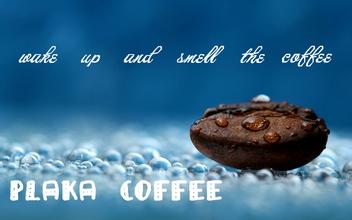Introduction to the characteristics of mild intensity / soft Puerto Rican Coffee Manor
On 6 November 2012, Puerto Rico held its fourth referendum. The referendum consists of two rounds of voting. In the first round, Puerto Ricans voted on "whether they want to change the status quo in their relations with the United States". 1.8 million people were eligible to vote, 65000 gave up the first round of voting, and 54 per cent of those who took part in the vote supported a change of relationship. Subsequently, Puerto Ricans made a choice on how to make a change, with three options for voters to choose from: "become a state of the United States", "expand autonomy" and "full independence". In this round of voting, only 1.3 million people voted, 61 per cent supported becoming the 51st state of the United States, about 33 per cent wanted to expand autonomy, while only 5 per cent were in favor of full independence Puerto Ricans were the general name of the residents of United States Puerto Rico in Central America and the Caribbean. There are about 3.4 million people (1979). Spanish and English are widely used. More Catholic. The earliest inhabitants of Puerto Rico were Arawak and Caribbean Indians. In 2012, whites of European origin accounted for about 73% of the population, mixed-race people accounted for 23%, and blacks accounted for 4%. There are also more than 20,000 Americans and immigrants from other countries. 20% of the economically independent population are engaged in industry, 17.2% in commerce, 7.3% in agriculture, 17% in construction and transport, and 33.7% in service industries. [7] the citizens of Puerto Rico are all United States citizens in a complete sense. After moving to the United States, they have the right to vote in the national election. The current Governor Alejandro Garcia Patia (Alejandro Garcia Padilla)
San Juan
San Juan
), people's Democratic Party. Born in Puerto Rico on August 3, 1971, he received a bachelor's degree in political science and economics from the University of Puerto Rico and a law degree from the Pan American University of Puerto Rico. Professional lawyer. Zeng Renbo, assistant judge of the Court of Appeal and professor of law at the Pan American University of Puerto Rico. From 2005 to 2007, he served as Minister of Consumer Affairs of Poland. He was elected as a senator in 2008. He has been chairman of the people's Democratic Party since April 2011. He was elected Governor of Poland in November 2012 and took office in January 2013.
The Caribbean Sea is a warm, romantic and mysterious sea, and a lot of good coffee is also around this ring sea, such as the Blue Mountains of Jamaica, the Dominica, the Crystal Mountains of Cuba, Yuko of Puerto Rico and so on. These are the most famous rare and expensive coffee in the world. These island beans give people a light milky aroma and elegant floral aroma, acidity and meticulous softness. Although it is still difficult to avoid the problem of easy water loss of coffee caused by the muggy climate of the island, the overall texture is the first-grade beans in coffee, and it is not easy to buy Puerto Rican coffee on the market, mainly because the output is less and mostly exported to Europe. in addition, the damage caused by severe weather hurricanes has a negative impact on coffee crops. The history that there would be no coffee to buy coffee in the whole year had a lot to do with the Spanish reclamation. Coffee was not that important in the 18th century. The main job was to grow sugar-producing crops in fertile valleys. In the early 19th century (1800), the residents of Corsica in the French Mediterranean moved to Puerto Rico because the valleys had been occupied by Spanish immigrants. So they chose to settle in the southwest mountain area of the island, mostly near the city of Yuko. because of their efforts and determination, coffee cultivation brought them a good return. They dominated the coffee industry on the island in the 1860s. At that time, Puerto Rico's coffee bean production ranked sixth in the world, and the coffee trees planted by Corsican immigrants on the highlands were regarded as selected. The origin of Yauco Selecto coffee beans is mainly traced back to this period, but two severe hurricanes hit Puerto Rico in 1898. These two hurricanes destroyed the local coffee industry, and farmers had to wait two years to get the crops back to normal. During this period, the United States was very interested in Puerto Rico's sugar production, and European countries no longer imposed tariffs on Puerto Rico coffee beans as crops produced in their colonies. It has dealt a heavy blow to Puerto Rico coffee Yaoke SELECTO Puerto Rico's famous small producing area boutique coffee, the output is very limited, the annual output is only about 200 tons. This coffee has a clear island coffee flavor and low acidity, dry aromas with caramel, wet aromas with creamy and nutty flavors, a balanced palate and a rosemary finish. In Europe, Puerto Rico coffee is considered to be the representative of high-quality coffee. Puerto Rico has a very long history of coffee cultivation. As a Caribbean island, as early as the 1860s, the coffee growing industry as a commodity began to rise here. What is interesting is that in recent years, with the increase of import tariffs on Puerto Rico coffee in the United States and other countries, the coffee growing industry here has shrunk to a great extent. However, with the new round of industrial reshuffle and integration, the coffee planting level and product quality here have been improved to a certain extent.

Important Notice :
前街咖啡 FrontStreet Coffee has moved to new addredd:
FrontStreet Coffee Address: 315,Donghua East Road,GuangZhou
Tel:020 38364473
- Prev

Introduction to the characteristics of Dominica Coffee Flavor Manor with fresh, elegant and full grains
The Dominican Republic is located in the east of the island of Haiti in the West Indies, bordering the Republic of Haiti to the west, the Atlantic Ocean to the north and the Caribbean Sea to the south. With an area of about 49000 square kilometers and a population of 7.1 million, the Dominican Republic and the Republic of Haiti coexist on an island bordering Haiti. Like its neighbors, the Dominican Republic had a history of revolution and poverty, but now
- Next

How does Burundian coffee taste?
Burundi has the most diverse and successful coffee industry in the world, and has its own characteristics. Coffee in this country was introduced by Belgian colonists in 1930 and is now grown only on small farms. Unfortunately, many of these farms are on the border with war-torn Rwanda, putting pressure on coffee production. Coffee produced in Burundi.
Related
- Detailed explanation of Jadeite planting Land in Panamanian Jadeite Manor introduction to the grading system of Jadeite competitive bidding, Red bid, Green bid and Rose Summer
- Story of Coffee planting in Brenka region of Costa Rica Stonehenge Manor anaerobic heavy honey treatment of flavor mouth
- What's on the barrel of Blue Mountain Coffee beans?
- Can American coffee also pull flowers? How to use hot American style to pull out a good-looking pattern?
- Can you make a cold extract with coffee beans? What is the right proportion for cold-extracted coffee formula?
- Indonesian PWN Gold Mandrine Coffee Origin Features Flavor How to Chong? Mandolin coffee is American.
- A brief introduction to the flavor characteristics of Brazilian yellow bourbon coffee beans
- What is the effect of different water quality on the flavor of cold-extracted coffee? What kind of water is best for brewing coffee?
- Why do you think of Rose Summer whenever you mention Panamanian coffee?
- Introduction to the characteristics of authentic blue mountain coffee bean producing areas? What is the CIB Coffee Authority in Jamaica?

